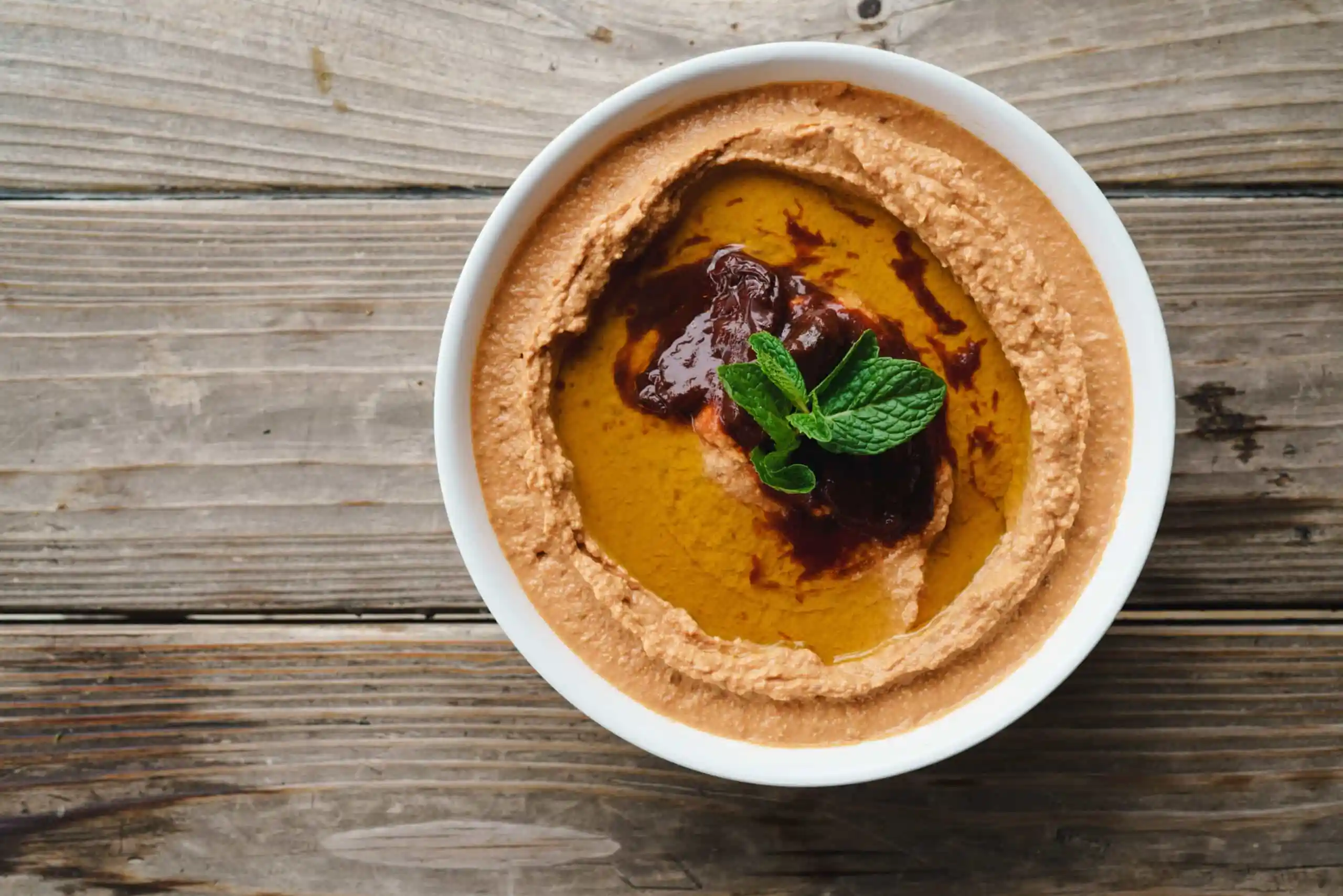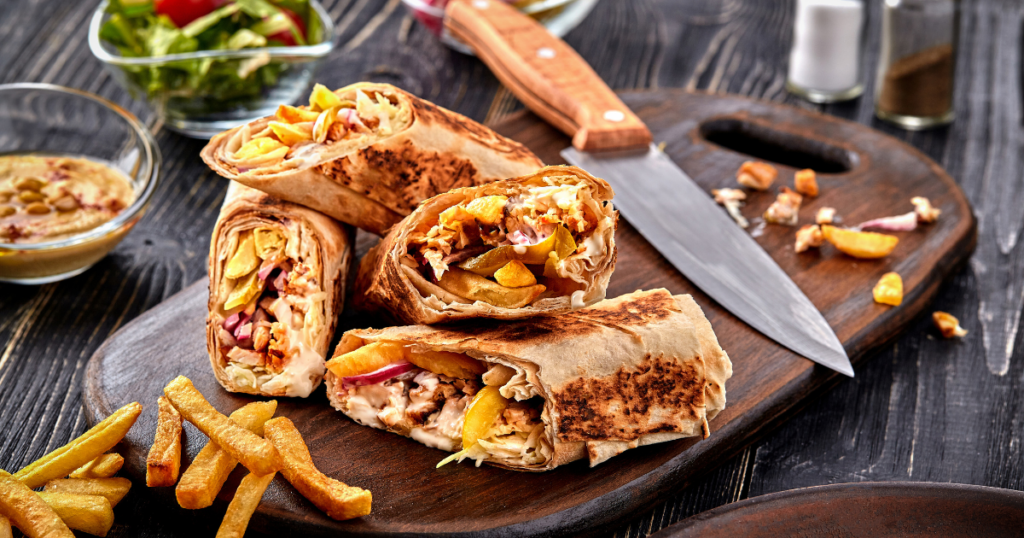Middle Eastern Dishes – A Journey Through the Flavors of the Region | 365Tastes
Middle Eastern cuisine is a vibrant tapestry of flavors, textures, and spices that have evolved over centuries. From the bustling streets of Morocco to the ancient kitchens of Persia, Middle Eastern dishes are a reflection of the region’s rich history, diverse cultures, and deep-rooted traditions. At 365Tastes, we take pride in introducing you to the incredible flavors of the Middle East, showcasing the variety and depth of this culinary world.
Whether you’re new to Middle Eastern food or a seasoned enthusiast, there’s always something new to discover. In this article, we will take you on a journey through some of the most beloved and iconic Middle Eastern dishes, shedding light on their origins, key ingredients, and why they should be on your must-try list.
1. Hummus: The Creamy Delight
Hummus is a beloved Middle Eastern classic that has become a global favorite, known for its rich, creamy texture and nutty flavor. At 365Tastes, we believe hummus is more than just a dip—it’s a versatile dish that can transform any meal. Primarily made from chickpeas, which provide a hearty, earthy base, hummus is blended with tahini (sesame paste), olive oil, garlic, and lemon juice to create a perfectly balanced taste. This combination not only offers a delicious flavor but also provides a smooth, velvety texture that’s both satisfying and healthy.
While hummus has ancient roots, it has become a staple in kitchens around the world, including at 365Tastes, where we love experimenting with different variations. Whether served as a dip, spread, or side dish, hummus can be adapted to various meals and enjoyed in countless ways. Its ability to complement grilled meats, fresh vegetables, or even used as a sandwich spread makes it a go-to ingredient in many households. At 365Tastes, we offer tips and recipes to inspire your creativity in using hummus, ensuring it fits perfectly into your lifestyle.

Why You Should Try It:
Hummus is not only delicious but also highly nutritious. Rich in protein, fiber, and healthy fats, it’s a great option for vegetarians and anyone looking to enjoy a wholesome, satisfying dish. The creamy texture of hummus makes it an ideal accompaniment to grilled meats and vegetable dishes, while its zesty flavor adds brightness to any meal.
Pro Tip: Elevate your hummus with toppings like roasted pine nuts, paprika, or a drizzle of olive oil.
2. Falafel: The Crispy Chickpea Fritters -Middle Eastern Dishes
Another iconic dish from the Middle East that we at 365Tastes absolutely love is falafel—crispy, deep-fried fritters made from ground chickpeas or fava beans, mixed with fresh herbs like parsley, cilantro, and garlic. These flavorful, golden-brown balls have a satisfying crunch on the outside while remaining tender on the inside, making them an irresistible snack or meal. At 365Tastes, we take pride in sharing authentic recipes, and falafel is one we enjoy customizing for different tastes.
Falafel is often served in a warm pita sandwich, accompanied by creamy tahini sauce and a variety of fresh vegetables like tomato, cucumber, and onion. The combination of flavors and textures—crispy falafel, tangy sauce, and crunchy veggies—makes for a perfect, well-rounded meal. Whether you’re looking for a vegetarian dish or a wholesome lunch, falafel never disappoints.
Why You Should Try It:
Falafel is a vegetarian favorite and a great source of protein and fiber. The crispy exterior combined with the soft, herb-filled interior creates a delightful texture contrast that’s simply irresistible. Whether enjoyed on its own as a snack or as part of a larger meal, falafel is a must-try Middle Eastern dish.
Pro Tip: Serve your falafel with a side of tzatziki or a dollop of garlic sauce for added flavor.
3. Shawarma: A Middle Eastern Classic
Shawarma is a beloved street food in the Middle East. Made by stacking marinated cuts of lamb, beef, or chicken on a vertical rotisserie, the meat is cooked slowly, allowing the flavors to develop and the exterior to become crispy and caramelized. Shawarma is typically served with pita bread or flatbreads, topped with fresh vegetables, pickles, and tahini or garlic sauce.

Why You Should Try It:
Shawarma is an explosion of flavors—spiced, tender, and juicy—making it one of the most satisfying dishes in Middle Eastern cuisine. The marinade, which often includes yogurt, garlic, cumin, paprika, and cinnamon, infuses the meat with a complex depth of flavor. It’s a dish that has won the hearts of food lovers across the globe.
Pro Tip: For an authentic experience, try pairing shawarma with a refreshing drink like mint lemonade or pomegranate juice.
4. Tabbouleh: A Fresh and Light Salad
Tabbouleh is a light and refreshing salad that is often enjoyed as a side dish or appetizer in Middle Eastern meals. The base of the salad consists of parsley, tomato, onion, and bulgur (cracked wheat), all dressed in a tangy lemon vinaigrette with a touch of olive oil.
Why You Should Try It:
Tabbouleh is a healthy, fresh, and vibrant dish that adds a burst of flavor to any meal. The fresh herbs combined with the nutty texture of the bulgur create a delicious and satisfying dish. This salad is also a great source of fiber, vitamins, and minerals, making it a wonderful addition to any diet.
Pro Tip: Add a bit of mint or pomegranate seeds for extra flavor and color.
5. Fattoush: A Flavorful Middle Eastern Salad
Fattoush is a crunchy salad made with lettuce, tomatoes, cucumbers, and radishes, tossed with crispy pieces of pita bread. It’s often seasoned with sumac (a tangy, sour spice) and dressed with a lemony vinaigrette made with olive oil and pomegranate molasses.
Why You Should Try It:
Fattoush is a unique take on a salad, offering a combination of crisp vegetables, crunchy pita chips, and a zesty dressing. The sumac adds a sour element that perfectly complements the richness of the olive oil and pomegranate molasses. It’s an excellent way to refresh your palate and add a healthy touch to your meal.
Pro Tip: To make it even heartier, add grilled chicken or chickpeas on top.
6. Kibbeh: A Savory Meat and Bulgur Dish
Kibbeh is a traditional dish made with ground meat (usually lamb or beef), bulgur, and spices like cinnamon, allspice, and cumin. The mixture is shaped into balls or patties and can either be fried, baked, or served raw as kibbeh nayeh (similar to steak tartare). It’s often served as an appetizer or part of a larger meal.

Why You Should Try It:
Kibbeh is a rich and flavorful dish with a perfect balance of spiced meat and soft bulgur. The combination of spices and herbs creates a savory, aromatic profile that’s a joy to eat. Whether fried or baked, kibbeh offers a satisfying bite and is a great dish to share with friends and family.
Pro Tip: Serve kibbeh with a side of yogurt sauce for extra flavor and creaminess.
7. Baklava: The Sweet and Sticky Delight
No journey through Middle Eastern cuisine is complete without experiencing baklava. This famous dessert consists of layers of filo pastry, filled with chopped nuts (typically pistachios, walnuts, or hazelnuts), sweetened with honey or sugar syrup, and spiced with cinnamon and cloves.
Why You Should Try It:
Baklava is a rich, sweet pastry with a delightful contrast between the crispy layers of filo pastry and the sticky, sweet syrup that holds it all together. The crunchy nuts add texture, while the spices create a deep, aromatic flavor profile. It’s the perfect dessert to enjoy with a cup of mint tea or Turkish coffee.
Pro Tip: Try making baklava with a mix of nuts and drizzle with rose water for a traditional twist.
8. Moutabal: A Smoky Eggplant Dip
Middle Eastern Dishes – Moutabal is a delicious and unique Middle Eastern dip that often gets confused with hummus due to its creamy texture and use of tahini. However, what sets moutabal apart is its star ingredient: roasted eggplant. The eggplant is charred over an open flame or roasted until the skin becomes dark and wrinkled, imparting a deep, smoky flavor that infuses the dip. This smokiness, combined with the creamy tahini, fresh garlic, and zesty lemon juice, creates a rich, velvety texture and a taste that is both comforting and complex.
Why You Should Try Moutabal
Moutabal offers a flavor profile that is distinct from traditional hummus. The roasted eggplant gives it a smoky depth that makes it stand out, making it the perfect dip for those looking for something with a bit more character. The addition of tahini and lemon juice gives it a silky smooth texture, making it easy to spread on bread or dip into with vegetables. Whether served as a side dish, appetizer, or as part of a mezze platter, moutabal is sure to impress with its unique combination of flavors and textures.
For vegetarian or vegan diets, moutabal is an excellent option, offering a hearty, flavorful dip that doesn’t rely on meat. The use of tahini and eggplant ensures that it’s packed with healthy fats and antioxidants. The garlic brings a mild but robust savoriness, while the lemon juice adds a bright, tangy kick that perfectly balances the richness of the other ingredients.
Perfect Pairings for Moutabal
Moutabal is incredibly versatile and can be paired with various dishes to elevate any meal. Traditionally, it’s served as part of a mezze platter alongside other dips like hummus, baba ganoush, and tzatziki. Here are a few ideas to enjoy your moutabal:
- Freshly baked pita bread: Soft, warm pita is perfect for scooping up the creamy moutabal, complementing the smooth texture of the dip.
- Grilled meats: Moutabal pairs beautifully with grilled meats such as lamb, chicken, or beef. The smoky flavor of the eggplant enhances the savory profile of the meat, adding richness to the meal.
- Grilled vegetables: If you’re looking for a light and healthy pairing, grilled vegetables like zucchini, bell peppers, and eggplant work wonderfully with moutabal.
- Salads: A refreshing cucumber and tomato salad drizzled with olive oil and lemon is a perfect accompaniment to the creamy dip, creating a refreshing contrast to the smoky eggplant.
Garnish Ideas for Moutabal – Middle Eastern Dishes
To make your moutabal even more visually appealing and flavorful, consider garnishing it with some fresh toppings. A few ideas include:
- Pomegranate seeds: Their sweet-tart flavor and bright red color provide a beautiful contrast to the creamy dip and add a touch of freshness.
- Fresh parsley: Chopped parsley not only adds a pop of green but also brings a hint of earthiness that complements the smoky eggplant.
- Olive oil drizzle: A final drizzle of high-quality olive oil over the dip enhances the richness and makes it even more indulgent.
- Smoked paprika: A light sprinkle of smoked paprika adds a hint of heat and visual appeal, intensifying the smoky flavor of the eggplant.
Conclusion: Discover the Vibrant Flavors of Middle Eastern Dishes
Middle Eastern cuisine offers a wealth of vibrant, flavorful, and diverse dishes that are sure to tantalize your taste buds. From hummus to baklava, the region’s culinary delights offer something for everyone. At 365Tastes, we’re passionate about bringing the rich flavors of the Middle East into your kitchen. Whether you’re exploring these dishes for the first time or revisiting old favorites, we invite you to embark on a journey through the vibrant and delicious world of Middle Eastern dishes.
Visit 365Tastes today for more recipes, tips, and inspiration on how to create authentic Middle Eastern dishes at home!
Middle Eastern Dishes – A Journey Through the Flavors of the Region | 365Tastes
 Tastes | Live healthy every day
Tastes | Live healthy every day

